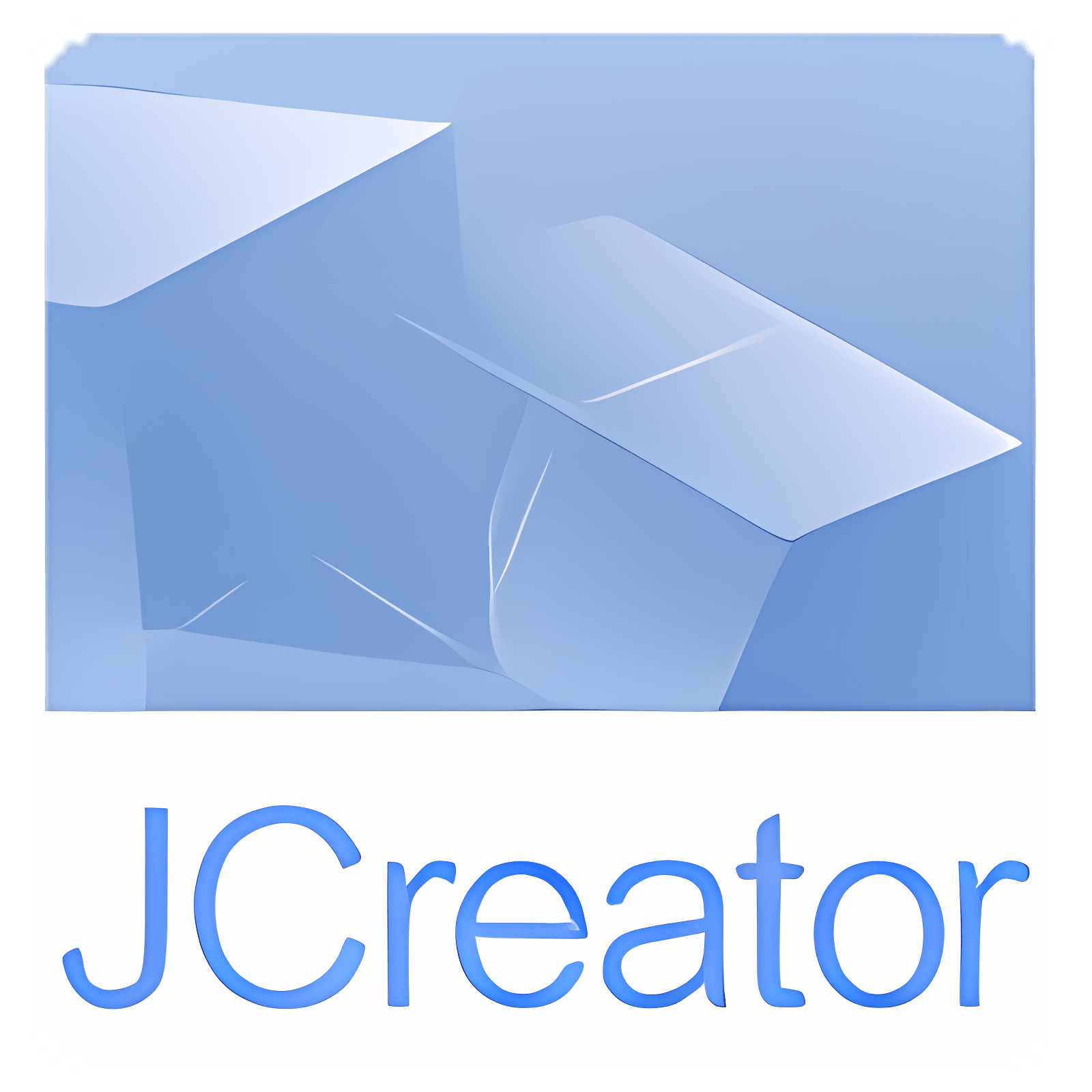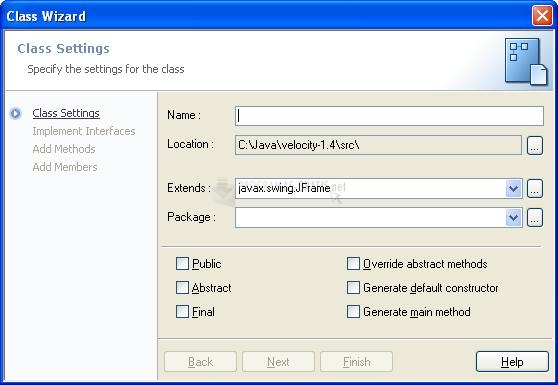Unzip the installation file Setup.exe of JCreator in a temporary directory and follow the steps for the Setup Wizard. Setting up JCreator with the Java Development Kit (JDK) Make sure you have the Java Development Kit suite installed from Sun, instead of the Java Runtime Environment. JDK Version 1.6:. Click JDK 6, and you will be forwarded to the download page. After the installation, start JCreator. Click Configure Options.
This video shows you how to install OSX on a Windows Netbook. They create a 'Mini Mac' and show you what the steps are. This is a good thing to do for. Sep 24, 2006 - Im currently in 11th Grade and taking programming as my major. We are using JCreator as our compiler and the likes. I was wondering, will the. Mac OS X (Cocoa) 32-bit Mac OS X (Cocoa) 64-bit Linux 32-bit Linux 64-bit. Downloaded 3,853,564 Times. Windows 32-bit: MD5 - SHA1 -.
In the tree, select JDK Profiles. Click the New button. Browse to the root directory of the JDK installation. For example, C: Program Files Java jdk1.6.0. On the Profile Settings dialog box, check to see if the Name field contains the version of the selected JDK directory.
Click File New Project. Create a test project from the Basic Java Application template.
Compile and run the project by pressing F7 and F5 on the keyboard. JCreator now runs your Java application. It means that that path for the compiler or virtual machine is not configured correctly in JCreator. Make sure you have the Java Development Kit suite installed from Sun, instead of the Java Runtime Environment. JDK Version 1.6:. Click JDK 6, and you will be forwarded to the download page. After the installation, start JCreator.
Click Configure Options. In the tree, select JDK Profiles. Click the New button. Browse to the root directory of the JDK installation. For example, C: Program Files Java jdk1.6.0. On the Profile Settings dialog box, check to see if the Name field contains the version of the selected JDK directory.
Click File New Project. Create a test project from the Basic Java Application template. Compile and run the project by pressing F7 and F5 on the keyboard. JCreator now runs your Java application. 1) Make sure you have the JDK documentation installed from Sun. JDK Version 1.6:.
(Bottom of the page) 2) Unzip the documentation archive to a directory. (For example C: Program Files Java jdk1.6.0 ) 3) After the installation start JCreator, open the Options dialog box from the Configure menu. Choose the tree item 'JDK Profiles' and click on the Edit button. The Profile Settings dialog will now popup.
Select the documentation tab and add the root folder (C: Program Files Java jdk1.6.0 ) of the java documentation directory to the list. Close the dialogs. 4) - Open a Java document in JCreator. Select the name of a class followed by Ctrl+F1. (For example String) - The internal browser will display the Java API documentation of the selected class.
Option One. Choose Options from the Configure menu. Select JDK Tools, select Run Application from the pulldown list, Edit. The Tool Configurations dialog box will be displayed. Enable the checkbox 'Prompt for main method arguments' Option Two.
Open or Create a project. Select Runtime Configurations from the build menu. Select new or edit.
The Set RunTime Configuration dialog will popup, where you can fill in the arguments. Start the runtime item via the pulldown menu next to the execute project-button.
Java IDEs for Teaching Purposes V22.0101.003 Software download and Instructions. Using and Installing software used in class. ( NetBeans - BlueJ Edition ). ( NetBeans - BlueJ Edition).

You are free to use an IDE of your choice. Here are a few options:. Click for further information on other IDE. Click for information on the Java Classes Library Instructions for installing the Java and the IDE Window Step 1: Install the Java Development Kit (JDK) from Sun:.
Windows users will need to install JDK first (the Java Development Kit from Sun). JDK is available from Sun at.
Instructions for installing the JDK bundle (JDK and JCreator) are posted. (Note: You do NOT need to install JCreator to use NetBeans.) Step 2: Install one of the following IDE: JCreator OR NetBeans (BlueJ Edition):. (Note: You do NOT need to install JCreator or NetBeans if you installed the JDK and JCreator bundle from above). OR. NetBeans (BlueJ Edition). Go to and select Download the System Here. Be sure to select the correct version for your system (Windows) before you download.
Jcreator Alternative For Mac
Mac: On Mac OS X systems, Java is already available so you do not need to install it. Install NetBeans - BlueJ Edition:. Click to donwload NetBeans - BlueJ Edition.

Avast For Mac Free
Then select and click 'NetBeansBlueJ-5.0Beta-060510-macosx.tar.gz' to Download for the MAC OS. Instructions for using the IDE: Netbeans - BlueJ edition (for the MAC) Getting Started: writing and running programs: For a new project (and getting started):. FILE / NEW PROJECT / BlueJ / Empty BlueJ Project / Enter a project name & file location / FINISH Then to start programming:. FILE / NEW FILE / JAVA CLASSES / EMPTY JAVA FILE / NEXT / Enter a file name at the top of the screen; leave 'Package' blank / FINISH. Now you can start typing your code or copy and paste from a model that we have done in class. Adding line numbers to your screen:.

VIEW / SHOW LINE NUMBERS Writing programs:. use F9 to compile the current file on Windows (on the Mac use the menu: BUILD / COMPILE FILE). use Shift + F6 to execute the current file (both Windows and Mac). Note: In Windows. You can use the 'BlueJ View' under Projects to right-click on your file and select 'Compile' or 'Run'. Debugging:.
Click on the line number of the first line in main (after the opening brace) to set a breakpoint; this should color the line in a dark pink. use Run / Run Other / Debug or CTRL + shift + F5 to start a debugging session in your file. use F8 to step through your program, line by line within main. To step through additional methods, use F7.
Note: It is cumbersome to try to debug through a JOptionPane statement; it is easier to comment out the JOptionPane statement and follow it with an initialization, such /. String sentence=JOptionPane.showInputDialog(null, 'Type in a sentence', 'Input Sentence Window', JOptionPane.QUESTIONMESSAGE);./ String sentence = 'The caT is AsleEp.' ;. Use Run / Finish Debugger Session to end. Click on the line number of your breakpoint line to remove the breakpoint. Use Window / Debugger Window to seleect the Watch window.
Right-click on the PC with your cursor in the Watch window or use CTRL+Shift+F7 to add variables to the Watch Window Troubleshooting (General):. If you can't step through a program: Try assigning literals to your variables and comment out the JOptionPane dialogue boxes for data entry when you wish to step through a program; this will simplify the process. When your program works to your satisfaction, you can remove the comments and query the user for the input values. If you run out of memory, it could be that there are too many processes running simultaneously. This can happen if you run a program and it crashes but the process has not been terminated or if you omit the line System.exit(0).
Save your work, exit, and re-start. Troubleshooting (Mac):. Use the menus rather than shortcuts (for example, use BUILD / COMPILE FILE rather than 'F9'. Be sure to create a new folder on your system to hold your programs rather than trying to use the default folder. (NetBeans uses a hidden folder for the default directory location.) Use FILE / MOUNT FILESYSTEM to be able to use that folder for your programs. Try CTRL-C and CTRL-V to copy and paste. Rather than using the command key.
Use F7 and F8 to step through programs just as you would on the PC. In order to add variables to a watch window, use CTRL+click to obtain the menu.